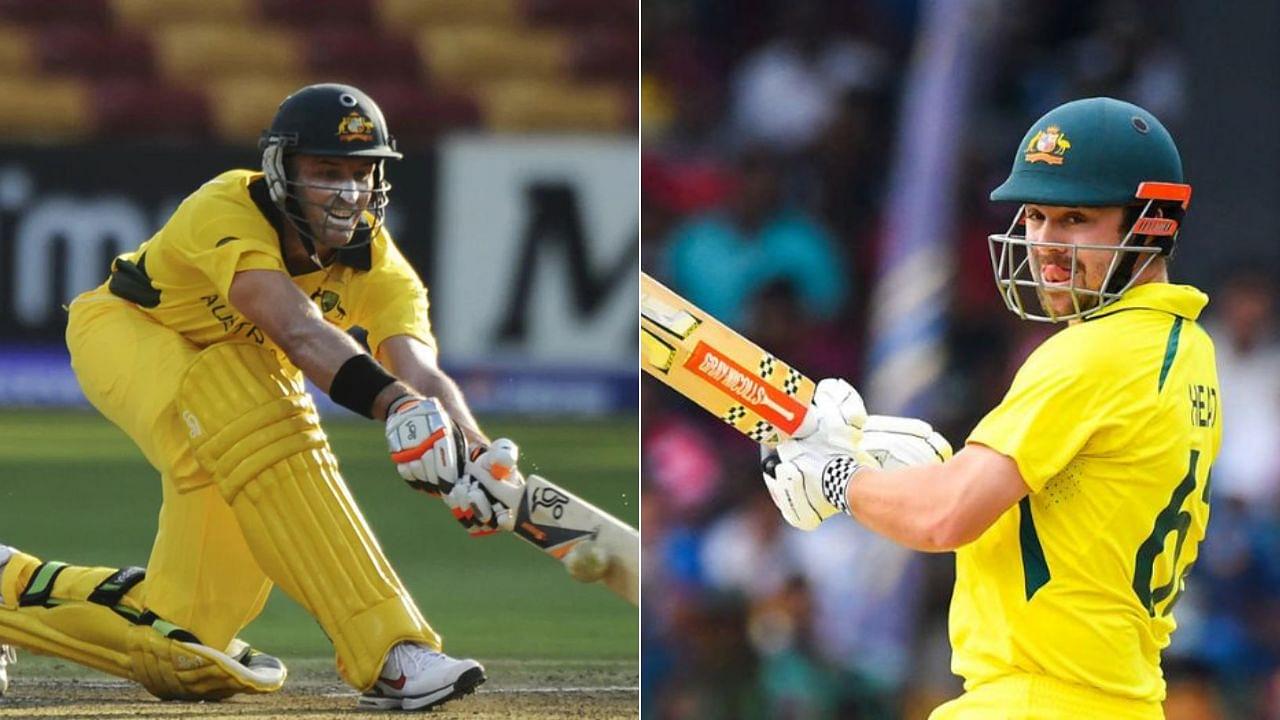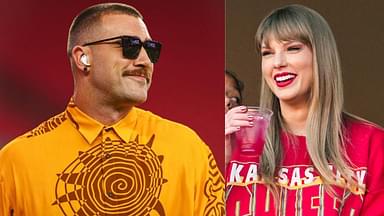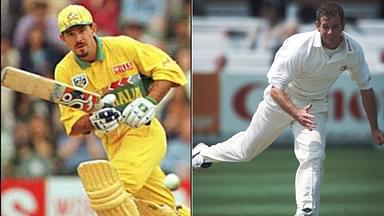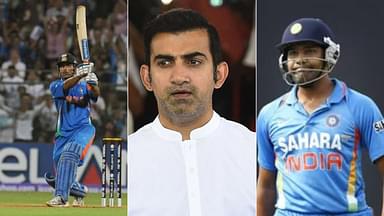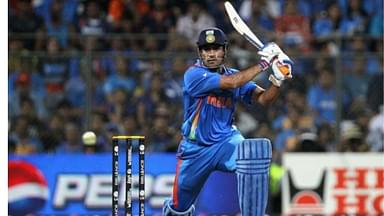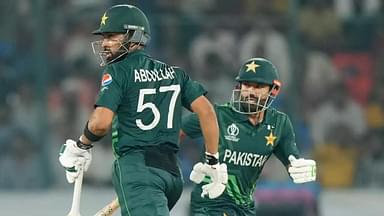Having left former batter Michael Hussey out of their ICC Cricket World Cup 2011 squad due to an injury, Cricket Australia selectors did not make a similar decision with respect to batter Travis Head whilst announcing the team’s 2023 World Cup squad.
Advertisement
It perhaps provides an insight into a change in mindset of their selection panel ahead of a world event, where they have taken a risk despite the batter in contention of being declared unavailable to take the field during the first few matches.
A similar approach has been adopted by New Zealand as they have made sure to include captain Kane Williamson in their imminent World Cup squad as well. For the unversed, the 33-year-old continues to recover from a knee surgery and has been ruled out of the team’s opening match against England in Ahmedabad on Thursday.
Unlike Michael Hussey, Travis Head Makes It To Australian 2023 World Cup Squad
It was around a couple of weeks ago when Australian head coach Andrew McDonald had confirmed that Head has been ruled out of the first half of the upcoming World Cup. However, the decision to still have him in the squad in spite of a few options up their sleeve as his replacement resembles a stark difference in the way their then selection panel led by chairman Andrew Hilditch had approached a nearly similar situation during the previous ODI World Cup in the subcontinent.
It is worth of a mention that the decision to overlook or leave out Head would have been a difficult one for Australia as the southpaw has been in prolific form in the format since marking his return to the ODI side against Pakistan in March last year.
Across 16 matches since then, he has scored 791 runs at an average of 60.84. A majority of these runs have been scored by him as an opener, and as stated by Australian selection chief George Bailey, he would have certainly been their first-choice player throughout the World Cup campaign.
For those unaware, the 29-year-old had suffered a fracture in his left hand while attempting to pull a delivery bowled by pacer Gerald Coetzee during the fourth ODI against South Africa last month. Although it didn’t require a surgery, the extent of the injury is severe enough to keep him out of action for a few weeks.
Meanwhile, known to grab opportunities by the scruff of their necks, it was Marnus Labuschagne‘s impressive performances during the above mentioned series against the Proteas followed by the one against India a few days ago that forced the selectors to have him in the World Cup squad instead.
Not part of the initially announced 15-member squad, it was him leading the team to victory in the first ODI while playing as a concussion substitute which had the selectors’ attention towards him. Labuschagne ended the series as the highest run-scorer (283 runs across 5 innings) and then averaged 46 in a three-match ODI series against India to finally seal his berth. As a result, he replaced all-rounder Ashton Agar in the final World Cup squad.
As for Head, it remains to be seen how he would force his way back into the Playing XI in the middle of the tournament as the duo of David Warner and Mitchell Marsh is likely to open the innings in his absence.
Michael Hussey Was Ruled Out Of Australian 2011 World Cup Squad
Hussey had suffered a serious hamstring injury (which later required surgery) during the first of a seven-match ODI series against England in January 2011. While Hussey was included in the 2011 World Cup squad announced a week later, he was left in disappointment and anger a month later after the selectors ultimately decided not to take him to India and risk his injury further.
The decision was a huge one. Post the 2007 ODI World Cup until the last ODI he played before the 2011 World Cup, the southpaw batter had been the backbone of the Australian batting line-up. He had scored 2,519 runs at an average of 47.52 in the middle-order across 76 matches Also, he was the only batter from down under to feature in the Top 10 of the ICC Men’s ODI batting rankings ahead of the tournament.
Fortunately, courtesy of an unfortunate injury suffered by pacer Doug Bollinger, Hussey was named his replacement and was available for selection for their next match against Kenya in Bengaluru. Australia had played only a couple of complete matches in the tournament until that point, registering comfortable victories against Zimbabwe and New Zealand.
Replacing David Hussey in the starting XI, he did score a fine half-century (54) right away against Kenya, but couldn’t contribute enough in the remaining matches. While he scored a 22-ball 12 against Pakistan during the last group stage match (which they had lost by 4 wickets), he returned back scoring 3 (9) during the quarterfinal clash against India at the Sardar Patel Stadium (currently named Narendra Modi Stadium) which crashed them out of the World Cup.

